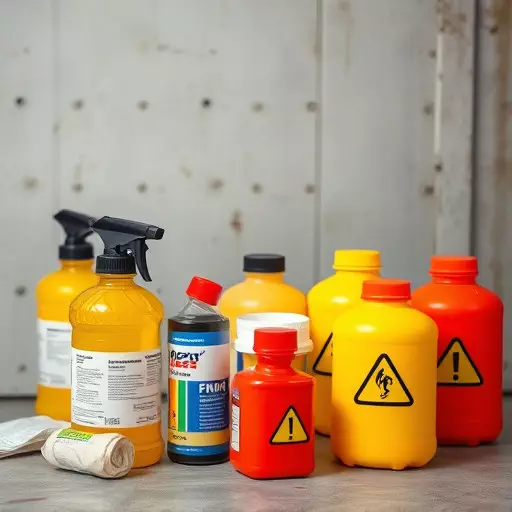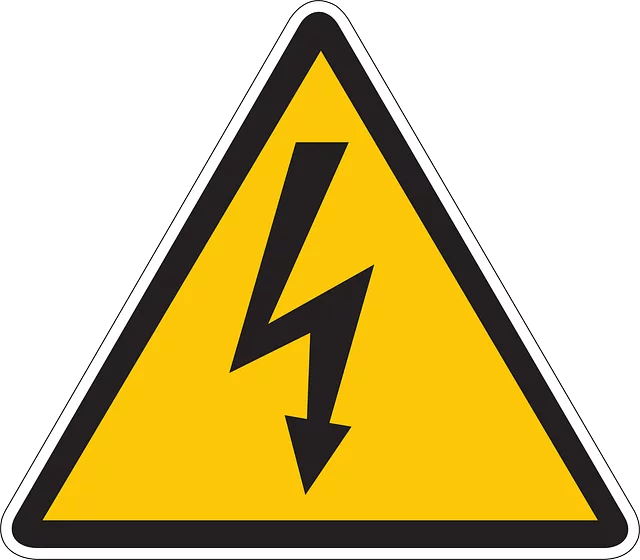OSHA workplace safety inspections are crucial for maintaining healthy work environments, focusing on hazard identification and compliance with regulations. These inspections involve trained professionals assessing physical conditions, equipment, practices, and documentation using structured hazard assessment protocols. A key aspect is verifying Safety Data Sheet (SDS) compliance, ensuring proper handling and storage of hazardous materials based on SDS information. Regular preparation and addressing post-inspection findings, including updating protocols and training staff, are vital for continuous safety improvement and compliance with OSHA standards to avoid penalties and accidents.
“Uncovering the intricacies of OSHA workplace safety inspections is paramount for any organization aiming to maintain a secure work environment. This comprehensive guide navigates the critical components of these inspections, from hazard assessment protocols to post-inspection actions. By understanding the role of hazard identification and Safety Data Sheet (SDS) compliance, businesses can proactively mitigate risks and ensure regulatory adherence.
Explore strategies for preparation, common violations, and their impact, empowering you to foster a culture of safety.”
- Understanding OSHA Workplace Safety Inspections: A Comprehensive Guide
- The Role of Hazard Assessment Protocols in Inspection Process
- Identifying and Mitigating Hazards: Key Components of Inspections
- Ensuring Safety Data Sheet (SDS) Compliance During Inspections
- Common Violations and Their Impact on Businesses
- Preparation Tips for OSHA Workplace Safety Inspections
- Post-Inspection Actions: Corrective Measures and Employee Training
Understanding OSHA Workplace Safety Inspections: A Comprehensive Guide

OSHA workplace safety inspections are crucial for ensuring that workplaces adhere to health and safety standards. These inspections, conducted by trained professionals, involve a thorough evaluation of various aspects of a work environment, including physical conditions, equipment, practices, and documentation. The primary goal is to identify potential hazards, ensure compliance with OSHA regulations, and promote a safe working atmosphere.
During an inspection, hazard assessment protocols are rigorously followed. Inspectors examine the workplace for known and potential risks, checking against established safety guidelines. They review safety data sheets (SDS) to understand the properties and hazards of chemicals and materials used on-site. Proper storage, handling, and disposal procedures are verified, along with the effectiveness of safety equipment and personal protective measures. By combining these assessment protocols with rigorous compliance checks, OSHA inspections play a vital role in fostering a culture of continuous improvement and safety data sheet (SDS) compliance across industries.
The Role of Hazard Assessment Protocols in Inspection Process

OSHA workplace safety inspections are a critical component in ensuring employee well-being and legal compliance for businesses. Hazard assessment protocols play a pivotal role in this process by providing structured guidance for inspectors to identify potential risks within a work environment. These protocols involve a thorough examination of each workspace, focusing on various factors such as chemical exposure, ergonomic issues, machinery safety, and more.
By following established hazard assessment protocols, OSHA inspectors can systematically collect data and determine if employers are adhering to relevant safety standards, including Safety Data Sheet (SDS) compliance. This meticulous approach allows for a comprehensive evaluation of an organization’s safety culture and practices, enabling inspectors to identify areas where improvements are needed to foster a safer workplace.
Identifying and Mitigating Hazards: Key Components of Inspections

OSHA workplace safety inspections are a critical aspect of ensuring employee well-being and preventing accidents. The process begins with a thorough hazard assessment, where inspectors identify potential risks within a work environment. This involves examining various factors such as equipment, materials, processes, and even the physical layout to pinpoint any hazards that may cause injury or illness. By employing structured hazard assessment protocols, businesses can proactively address these issues before they escalate into serious safety concerns.
One of the key components during inspections is verifying compliance with Safety Data Sheet (SDS) requirements. SDS provide essential information about chemical substances and their safe handling procedures. Inspectors review if employers have properly trained staff on SDS content, made it easily accessible, and ensured adherence to safety guidelines associated with hazardous materials present in the workplace. Effective hazard mitigation strategies, coupled with SDS compliance, play a pivotal role in fostering a safer work environment.
Ensuring Safety Data Sheet (SDS) Compliance During Inspections

During OSHA workplace safety inspections, ensuring Safety Data Sheet (SDS) compliance is a critical aspect that inspectors meticulously review. SDS provide essential information about chemical hazards present in the workplace, including potential risks and recommended handling procedures. To maintain compliance, businesses must make these documents readily available to inspectors and ensure they accurately reflect the materials used on-site.
Inspectors will verify that SDS are up-to-date, accessible for all employees, and include vital details such as chemical composition, hazards, first aid measures, storage guidelines, and disposal instructions. Non-compliance with these protocols can lead to penalties, emphasizing the need for thorough hazard assessments and continuous updating of safety documentation to align with OSHA standards.
Common Violations and Their Impact on Businesses

OSHA workplace safety inspections are crucial for identifying potential hazards and ensuring compliance with safety standards. Common violations found during these inspections include lack of proper training, unsafe equipment, and failure to maintain a safe work environment. These issues can have significant impacts on businesses, leading to fines, legal repercussions, and most importantly, increased risk of accidents and injuries to employees.
Non-compliance with hazard assessment protocols and safety data sheet (SDS) compliance are among the top violations. Businesses that fail to conduct thorough hazard assessments may not be aware of all the risks present in their facilities, while those who don’t properly manage and communicate information about hazardous materials through SDS can put workers at greater danger. Such violations underscore the importance of proactive safety measures and regular OSHA workplace safety inspections to mitigate risks and maintain a secure working environment.
Preparation Tips for OSHA Workplace Safety Inspections

Before an OSHA workplace safety inspection, thorough preparation is key to demonstrating compliance and potential areas for improvement. Start by reviewing your hazard assessment protocols to ensure they are up-to-date and accurately identify risks on site. Organize and easily accessible Safety Data Sheets (SDS) for all chemicals present in the facility, as proper storage and handling documentation can significantly enhance your inspection score.
Additionally, make a comprehensive list of safety training records, emergency procedures, and any incident reports from the past year. Ensure that employees are aware of these processes and can provide clear explanations during the inspection. A clean and organized workplace not only presents a professional image but also aids inspectors in identifying potential hazards more efficiently.
Post-Inspection Actions: Corrective Measures and Employee Training

After an OSHA (Occupational Safety and Health Administration) workplace safety inspection, the next crucial step is to address any identified hazards and ensure corrective actions are taken. This involves a thorough review of the inspection findings and implementing measures to mitigate risks. Employers should prioritize fixing any violations or serious safety concerns noted during the inspection.
One essential aspect is providing adequate training to employees, especially if new hazards were discovered or existing risks require updated knowledge. Training programs can cover hazard assessment protocols, safe work practices, and the proper use of personal protective equipment (PPE). Additionally, ensuring compliance with Safety Data Sheet (SDS) distribution and employee access to critical safety information is vital for ongoing safety efforts.


